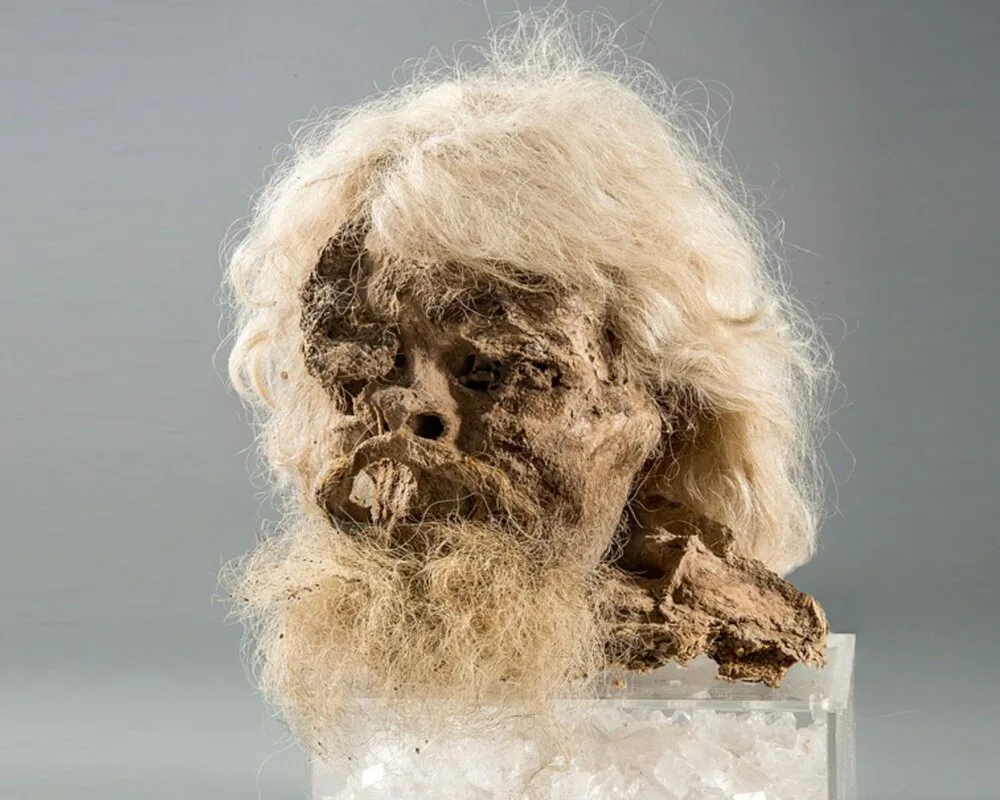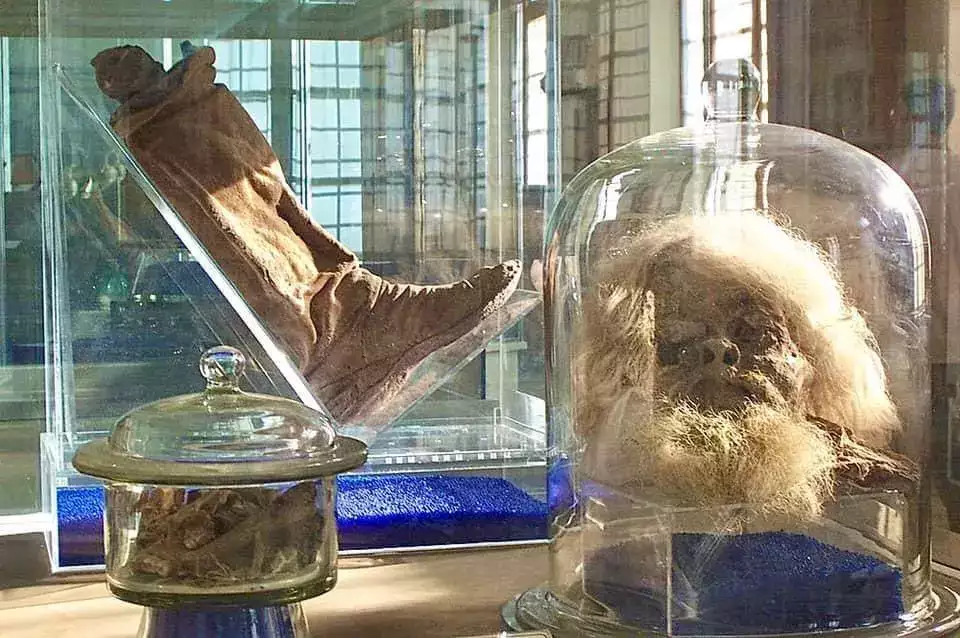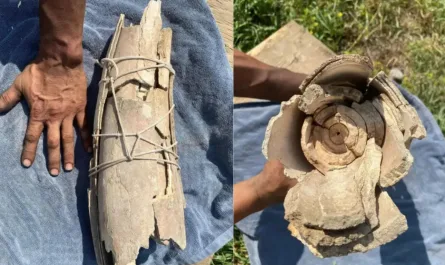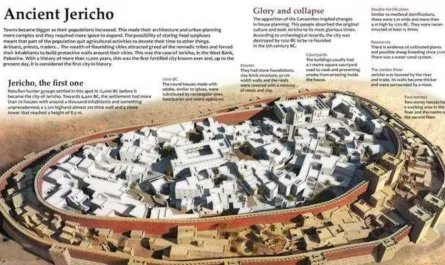The Salt Men of Chehrabad: A Window into Ancient Persia
In the winter of 1993, miners working in the Chehrabad Salt Mine in northwestern Iran unearthed an extraordinary find: a naturally preserved mummy, later dubbed Salt Man 1. This accidental discovery, followed by further finds in 2004 and 2005, opened a rare portal into ancient life, revealing not only well-preserved human remains but also artifacts that illuminate the world of ancient Persia around 955 BCE.

The Discovery of Salt Man 1
Salt Man 1 was found in a remarkable state of preservation, with long hair, a beard, and even internal organs intact, thanks to the mine’s dry, saline environment. Surrounding the body were artifacts that spoke to his life: a leather boot still encasing his foot, iron knives, woolen trousers, and a silver needle. These items suggest a man of modest means, possibly a miner or laborer, caught in a moment of daily life thousands of years ago. The salt’s desiccating properties acted as a natural mummification agent, preserving not just the body but a snapshot of his existence.

Further Finds and the Salt Men
The initial discovery prompted further excavations, yielding more mummies in 2004 and 2005, including a teenager among the so-called Salt Men. Radiocarbon dating places these individuals around 955 BCE, during the early Iron Age in Persia. The teenager, like Salt Man 1, was exceptionally preserved, with clothing and tools offering clues about their roles in the mining operations of the time. The presence of multiple bodies suggests the mine was a working site over centuries, possibly prone to accidents like collapses that trapped its workers.
The Science of Natural Mummification
The Chehrabad mummies owe their preservation to the unique conditions of the salt mine. Salt absorbs moisture, creating an inhospitable environment for bacteria and fungi that typically decompose organic matter. This natural mummification process preserved not only skin and hair but also softer tissues like muscles and organs, a rarity in archaeological finds. Unlike deliberate mummification practices, such as those of ancient Egypt, the Salt Men were preserved by chance, their bodies locked in time by the mine’s harsh conditions.
Insights into Ancient Life
The artifacts found with the Salt Men provide a glimpse into the material culture and daily life of ancient Persia. The woolen trousers and leather boots suggest practical clothing suited for labor in a harsh environment. Iron knives indicate metallurgical knowledge, while the silver needle hints at personal possessions or trade. These items, combined with the mummies’ physical remains, offer clues about diet, health, and social status, painting a picture of a working-class community tied to the salt trade, a valuable commodity in antiquity.
Archaeological and Historical Significance
The Chehrabad Salt Mine discoveries are more than just preserved bodies; they are a testament to the region’s ancient mining practices and the lives of those who toiled there. The mummies and their artifacts provide a direct connection to a time when salt was a precious resource, driving economic and cultural exchange. The site continues to be studied, with each find adding to our understanding of Iron Age Persia and the broader history of human labor and survival.
A Lasting Legacy
The Salt Men of Chehrabad stand as a remarkable example of how nature can preserve the past in ways that rival human intent. Their discovery underscores the importance of archaeological exploration in unexpected places, revealing stories of ordinary people whose lives might otherwise have been forgotten. The Chehrabad Salt Mine remains a site of wonder, bridging millennia and reminding us that even in the harshest conditions, history endures.


